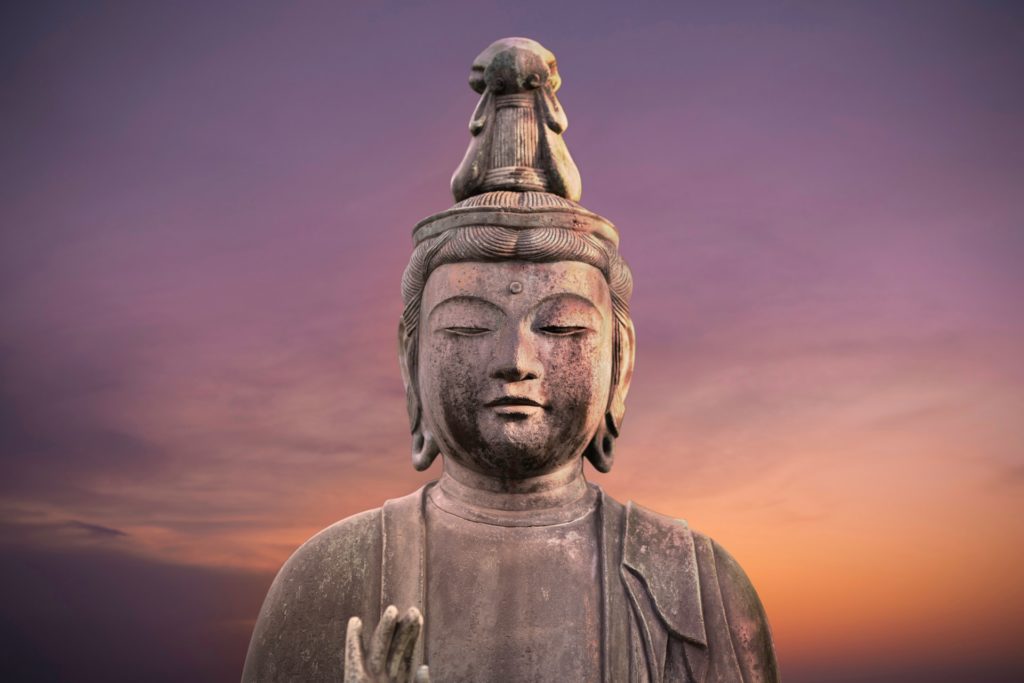
The cessation of the kleshas and the attainment of nirvana (nibbāna), with which the cycle of rebirth ends, has been the primary and the soteriological goal of the Buddhist path for monastic life since the time of the Buddha. The term “path” is usually taken to mean the Noble Eightfold Path, but other versions of “the path” can also be found in the Nikayas. In some passages in the Pali Canon, a distinction is being made between right knowledge or insight (sammā-ñāṇa), and right liberation or release (sammā-vimutti), as the means to attain cessation and liberation.
Nirvana literally means “blowing out, quenching, becoming extinguished”. In early Buddhist texts, it is the state of restraint and self-control that leads to the “blowing out” and the ending of the cycles of sufferings associated with rebirths and re-deaths. Many later Buddhist texts describe nirvana as identical with anatta with complete “emptiness, nothingness”. In some texts, the state is described with greater detail, such as passing through the gate of emptiness (sunyata) – realizing that there is no soul or self in any living being, then passing through the gate of signless-ness (animitta) – realizing that nirvana cannot be perceived, and finally passing through the gate of wishlessness (apranihita) – realizing that nirvana is the state of not even wishing for nirvana.

The nirvana state has been described in Buddhist texts partly in a manner similar to other Indian religions, as the state of complete liberation, enlightenment, highest happiness, bliss, fearlessness, freedom, permanence, non-dependent origination, unfathomable, and indescribable. It has also been described in part differently, as a state of spiritual release marked by “emptiness” and realization of non-self.
While Buddhism considers the liberation from saṃsāra as the ultimate spiritual goal, in traditional practice, the primary focus of a vast majority of lay Buddhists has been to seek and accumulate merit through good deeds, donations to monks and various Buddhist rituals in order to gain better rebirths rather than nirvana.
